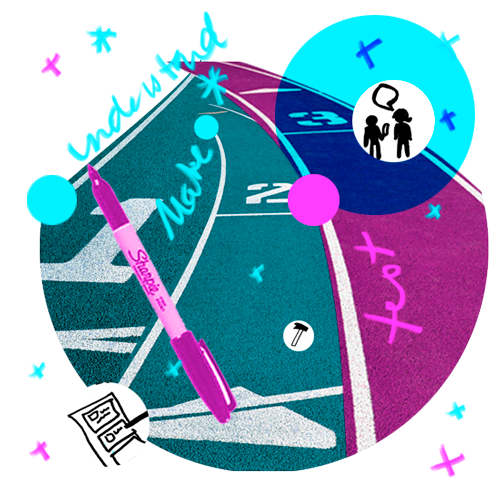What are Design Sprints good for?
Design Sprint series: Part 2
As described in my previous post design sprints are best used for high-level propositions or new parts within an existing service or product.
In this post, I cover the organisational conditions that this approach — both good and bad.
Good for…
Strategic design opportunities
Be it proposition or new product features it’s a great process to unlock insight with real people. To do it fast with just enough evidence to evaluate and make informed decisions about what to do next without huge investment.Invigorating teams
It’s a great process to re-spark teams who have lost their enthusiasm or as a way to form new more diverse teams. For example, a breakout feature design sprint for a regular running team or a new shape of the team to look at the bigger picture.Engaging stakeholders
It’s a good way to get stakeholder collaboration and investment with a mixture of experts. The process can also help to build cross-silo camaraderie that sometimes can get lost in company politics when people don't work directly together.
“By asking people for their input early in the process, you help them feel invested in the outcome.” Jake Knapp, Sprint
Unblock organisation structure
Sometimes silos in the organisation structure can get in the way of new ideas. Things are chugging along at a snail’s pace and you can’t get the right people in the room. Design Sprint can encourage collaboration and force siloed departments to unite. It’s fun and different so you will find people are more interested in being involved.Validate or disprove ideas fast
Design Sprint is a tool that can help shed light on the validity of propositional ideas with evidence before they bloat to become big and costly. By getting ideas in front of real people it can quickly prove or disprove a ‘hunches’ or ‘recons’ with actual evidence. It is especially useful where risky proposals with ‘assumed’ value escalated despite being unproven, a design sprint can quickly establish a better idea of value.
Not good for…
Detail
It’s a fast process, so is not a replacement for the actual rigorous work of user-experince design. You can do multiple sprints to get a quick rough picture, but it’s not a cheap alternative to doing things properly. Design Sprints help to uncover territories, validate propositions and narrow down your design solutions without dithering around. The work still needs to be done on the detail you just jumped a bit further along in the process.Too often or too far apart
Multiple sprints can be intense so you need to give people space to recover from the fast pace. Otherwise you risk burning the team out making the process and yourself rather unpopular. At the same time gaps in a sprint series can also affect momentum. Its important to sure your team actually remembers what they were doing last time. The right cadance as a fundamental part of sprint success.Low ‘sprint’ leadership capacity
Ensuring the team is happy, the process is in place and that design and research meets the correct standard is important. So your team's leadership needs to have a strong balance of everything otherwise you risk poor pace or quality.When there isn’t a clear objective
Like any design process working without a clear goal is confusing, but in a short timeframe this can become impossible to manage. For example with just a day of design time you need to be focused. A loose and vague brief will not help your team come up with more ideas. Narrow things down and focus on what you want, drop what’s not important and you will get better results.Absence of dedicated team
Sprint only really works with a team that is engaged. It’s an immersive process and people who are not available are not able to drive the project. It’s cool to have observers or collaborators who pop in, but don’t expect much to happen if the whole team is part-time and not committed. It’s also important for them to see testing, the process is wasted if you have to do hefty write ups of testing sessions.
